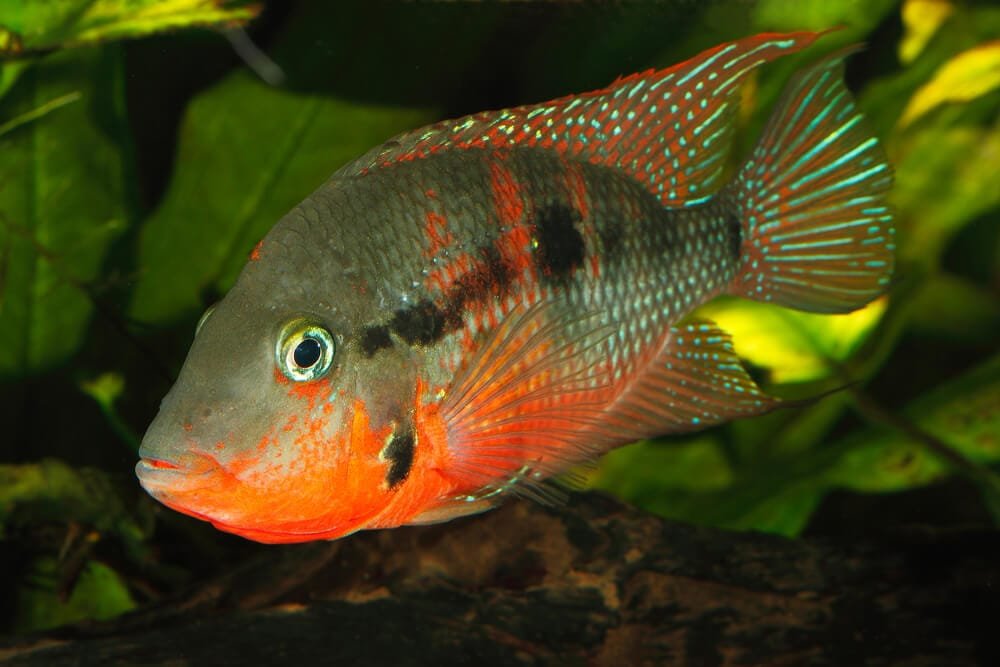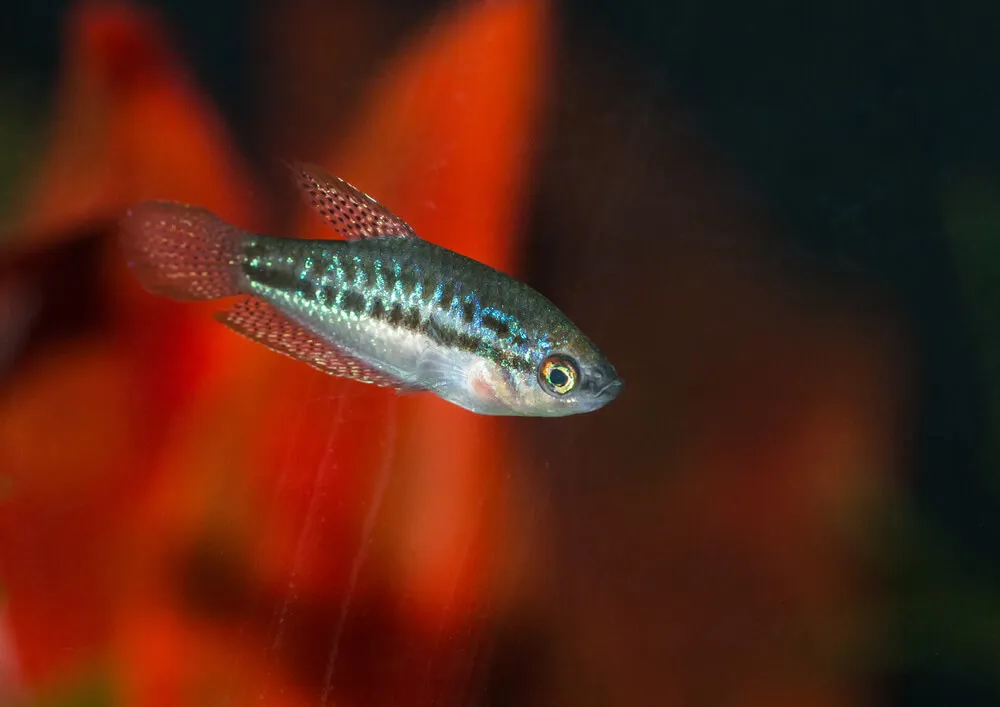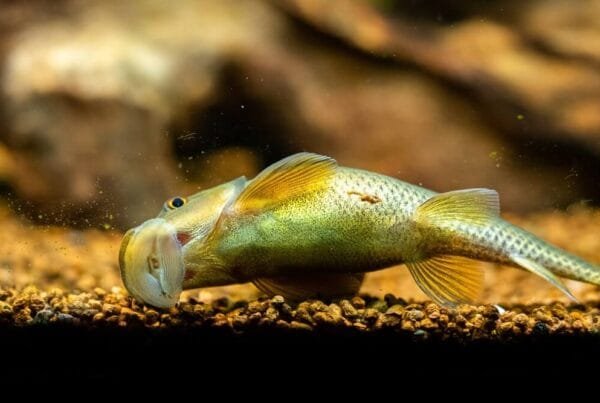Have you ever wondered if Kuhli Loaches need a substrate in their tank? Well, you’re in luck because we’re here to shed some light on this topic! Kuhli Loaches, with their unique eel-like appearance, are fascinating bottom-dwellers that can add a touch of intrigue to any aquarium. In this article, we’ll explore whether they require a substrate, discuss the benefits it provides, and offer some alternatives for those considering a substrate-free setup. So, let’s dive in and discover what’s best for these delightful aquatic creatures!
Benefits of Having Substrate in Kuhli Loach Tank
Having substrate in a Kuhli Loach tank provides several benefits that contribute to a healthy and natural environment for these unique and fascinating fish.
Enhancement of Natural Environment
One of the primary benefits of having substrate in a Kuhli Loach tank is the enhancement of the natural environment. By mimicking the substrate of their natural habitat, you can create a more comfortable and stress-free environment for your loaches. The presence of substrate provides a sense of security and allows them to engage in natural behaviors such as burrowing and hiding.
Facilitates Foraging Behavior
Substrate, such as fine sand or smooth gravel, enables Kuhli Loaches to engage in their natural foraging behavior. These bottom-dwelling fish have a tendency to sift through the substrate in search of food, and a suitable substrate provides them with the opportunity to exhibit this behavior. By allowing them to forage, you are promoting their overall well-being and providing them with mental stimulation.
Promotes Plant Growth
Substrate plays a vital role in supporting the growth of live plants in your Kuhli Loach tank. With a suitable substrate, such as aquarium soil or nutrient-rich gravel, you can create an ideal environment for aquatic plants to flourish. Live plants not only add beauty to the tank but also provide essential shelter and hiding places for the loaches. They can also aid in maintaining water quality by absorbing nitrates and reducing algae growth.
Aids in Biological Filtration
The presence of substrate in a Kuhli Loach tank promotes biological filtration, which is essential for maintaining a stable and healthy aquatic ecosystem. Beneficial bacteria colonize the substrate, breaking down organic waste and harmful compounds, such as ammonia and nitrites, into less harmful substances. This natural filtration process helps to remove toxins and maintain optimal water quality for the loaches.
Suitable Substrate Options for Kuhli Loaches
When considering the substrate options for your Kuhli Loach tank, it is important to choose materials that are suitable for their unique needs and behaviors. Here are some recommended substrate options for Kuhli Loaches:
Fine Sand
Fine sand is an excellent substrate choice for Kuhli Loach tanks. It closely resembles the natural riverbeds and streams where these fish are found in the wild. The smooth texture of the sand makes it easy for the loaches to sift through and forage for food without causing any harm to their delicate bodies.
Smooth Gravel
Smooth gravel is another suitable option for Kuhli Loach tanks. It provides a natural appearance and allows for easy planting of live aquatic plants. Ensure that the gravel is not too large or sharp, as this can cause injury to the loaches. Opt for rounded gravel pieces that the loaches can safely navigate through.
Aquarium Soil
Aquarium soil is a nutrient-rich substrate option that promotes plant growth and provides a natural environment for the loaches. It is specifically designed to provide essential nutrients that aquatic plants need to thrive. Additionally, aquarium soil helps to maintain stable pH levels and enhances the water’s natural buffering capacity, creating an optimal environment for the loaches.
Leaf Litter
In the wild, Kuhli Loaches are often found in habitats with leaf litter on the substrate. Adding a layer of dried leaves, such as Indian almond leaves or oak leaves, can mimic their natural environment and provide additional benefits. Leaf litter releases beneficial tannins into the water, creating a more natural-looking environment and providing potential health benefits for the loaches.
Factors to Consider When Choosing Substrate
When selecting the substrate for your Kuhli Loach tank, there are several factors to consider to ensure the best fit for both the fish and the overall aesthetic of the tank.
Size of Kuhli Loaches
Consider the size of your Kuhli Loaches when choosing the substrate. Fine sand or small gravel is ideal for smaller loaches, as it prevents them from getting trapped or injured. Larger loaches can handle slightly larger substrate options, but it is still important to avoid anything sharp or rough that may harm their delicate bodies.
Desired Aesthetic
Think about the overall aesthetic you want to achieve in your tank. If you aim for a natural or biotope-inspired look, consider substrates that closely resemble the natural environments of Kuhli Loaches, such as sand or gravel. If you prefer a more eye-catching display, you may opt for colored gravel or substrates with unique patterns.
Compatibility with Plants
If you plan to incorporate live plants into your tank, choose a substrate that supports their growth. Aquarium soil or nutrient-rich gravel provides essential nutrients for plants and encourages healthy root development. Consider the specific needs of the plants you intend to keep and choose a substrate that aligns with their requirements.
Maintenance Effort
Different substrates require varying levels of maintenance. Fine sand and aquarium soil may require more frequent cleaning and vacuuming to prevent debris buildup and maintain water clarity. Coarser gravel may be easier to clean but should still be regularly maintained to ensure the health of the loaches.
Tips for Setting Up Substrate in Kuhli Loach Tank
Setting up the substrate in your Kuhli Loach tank involves several essential steps to ensure its effectiveness and longevity. Here are some tips to help you get started:
Wash Substrate Thoroughly
Before adding the substrate to the tank, it is crucial to wash it thoroughly. Rinse the sand or gravel until the water runs clear to remove any dust, debris, or excess fine particles. This step helps prevent cloudiness in the water when the substrate is added and minimizes the introduction of harmful substances to the tank ecosystem.
Place a Layer of Substrate
Once the substrate is washed, add a layer to the tank. The depth of the substrate layer will depend on personal preference and the needs of the plants and loaches. Aim for a thickness of 1-2 inches to ensure adequate coverage for the bottom-dwelling loaches and provide a suitable environment for plant roots to grow.
Consider Adding Rooting Plants
If you plan to incorporate live plants, consider adding rooting plants that can anchor themselves in the substrate. Planting species such as Amazon swords, Java ferns, or Anubias can provide additional benefits to the tank, such as oxygenation, natural filtration, and habitat for the loaches. Ensure that the plants are planted securely in the substrate to prevent uprooting by the loaches.
Avoid Sharp or Rough Substrates
To safeguard the health and safety of your Kuhli Loaches, it is crucial to avoid sharp or rough substrates that may cause injuries or abrasions. Run your fingers along the substrate before adding it to the tank to ensure there are no sharp edges or rough textures that may harm the delicate skin of the loaches.
Maintenance and Cleaning of Substrate
Regular maintenance and cleaning of the substrate are essential to ensure a healthy and thriving tank environment for your Kuhli Loaches. Here are some tips for maintaining and cleaning the substrate effectively:
Regular Vacuuming
Regular vacuuming is necessary to remove any debris, uneaten food, and waste that may accumulate in the substrate. Use a gravel vacuum or siphon to gently stir the substrate and extract any unwanted substances. Be mindful not to disrupt the loaches or the plants while cleaning.
Avoiding Overfeeding
Overfeeding can lead to excess food sinking to the substrate, causing debris buildup and water quality issues. It is crucial to provide your loaches with appropriate portion sizes and monitor their feeding habits closely. Remove any uneaten food after a few minutes to prevent it from settling into the substrate.
Preventing Anaerobic Pockets
Certain substrate materials, such as fine sand, have the potential to develop anaerobic pockets due to their compact nature. These pockets can trap harmful gases and toxins, impacting the water quality and the health of your loaches. To prevent the formation of anaerobic pockets, regularly agitate the substrate during cleaning and consider using substrate additives that promote oxygen exchange.
Balancing Substrate Cleanliness
While it is essential to maintain a clean substrate, it is equally important not to excessively disturb it during cleaning. Loaches rely on the substrate for foraging and as a natural habitat, so ensure a balance between cleanliness and preservation of the substrate’s integrity. Avoid deep cleaning or completely replacing the substrate unless absolutely necessary.
Potential Substrate-Related Concerns
While substrate provides numerous benefits, there are some potential concerns to be aware of when incorporating it into a Kuhli Loach tank. Understanding these concerns will help you make informed decisions and take necessary precautions:
Risk of Accumulated Debris
Substrate has the potential to accumulate debris and waste over time, especially in tanks with larger populations of loaches. Regular maintenance and cleaning, as mentioned earlier, are crucial to avoid the buildup of excess debris that can negatively impact water quality and the overall health of the tank.
Interactions with Kuhli Loach Behavior
Kuhli Loaches are known to burrow and sift through the substrate, which can occasionally result in the uprooting of plants or disturbance of the tank layout. Consider the specific behaviors of your loaches when designing your tank and ensure that the substrate is secure enough to withstand their activities.
Impact on Water Parameters
Certain types of substrate, such as aquarium soil, may influence water parameters by releasing substances that can affect pH levels and water hardness. It is essential to monitor and adjust water parameters accordingly to maintain a stable and suitable environment for your loaches. Regular water testing and observation of your loaches’ behavior will help you identify any potential issues.
Safety for Bottom-Dwelling Fish
While having substrate in a Kuhli Loach tank is generally beneficial, it is important to select substrates that are safe for these bottom-dwelling fish. Avoid substrates with sharp edges, rough textures, or materials that may release harmful substances into the water. Prioritize the health and safety of your loaches by choosing substrates that are suitable for their delicate bodies.
Alternative Options to Substrate
Although having substrate is generally recommended for Kuhli Loach tanks, there are alternative options available for those who prefer a different approach or have specific tank requirements. Here are some alternative options to consider:
Bare-Bottom Tanks
A bare-bottom tank is an option for those who prefer a minimalist and easy-to-clean setup. This approach eliminates the need for substrate altogether and can simplify maintenance tasks. However, it is important to provide ample hiding places and natural enrichment for the loaches in other ways, such as adding decorations or plants.
Use of PVC Pipes or Caves
Another alternative to substrate is the use of PVC pipes or caves as hiding places for the loaches. These structures mimic natural burrows and provide secure shelters for the loaches. While they do not provide the same benefits as a substrate, they can be a suitable option for loaches that do not require substrate for foraging or burrowing behaviors.
Floating Plants as a Natural Substrate
Floating plants, such as water lettuce or duckweed, can be used as an alternative to traditional substrate. They create a natural and visually appealing environment while providing some of the benefits of substrate, such as shade, oxygenation, and nutrient uptake. However, it is important to note that floating plants may require additional maintenance and may not be suitable for all setups.
Summary
In conclusion, having substrate in a Kuhli Loach tank offers numerous benefits that contribute to the well-being and enjoyment of these unique fish. Substrate enhances the natural environment, promotes foraging behavior, supports plant growth, and aids in biological filtration. Remember to choose suitable substrates such as fine sand, smooth gravel, aquarium soil, or even leaf litter, and consider factors like loach size, desired aesthetic, compatibility with plants, and maintenance effort when selecting substrate. Additionally, ensure proper setup and maintenance of the substrate, while being mindful of potential concerns related to accumulated debris, loach behavior, water parameters, and the safety of bottom-dwelling fish. While substrate is recommended, alternative options such as bare-bottom tanks, PVC pipes or caves, and floating plants can be considered based on personal preferences and specific tank requirements. Ultimately, choosing the right substrate or alternative option will help create a thriving and engaging environment for your Kuhli Loaches.






